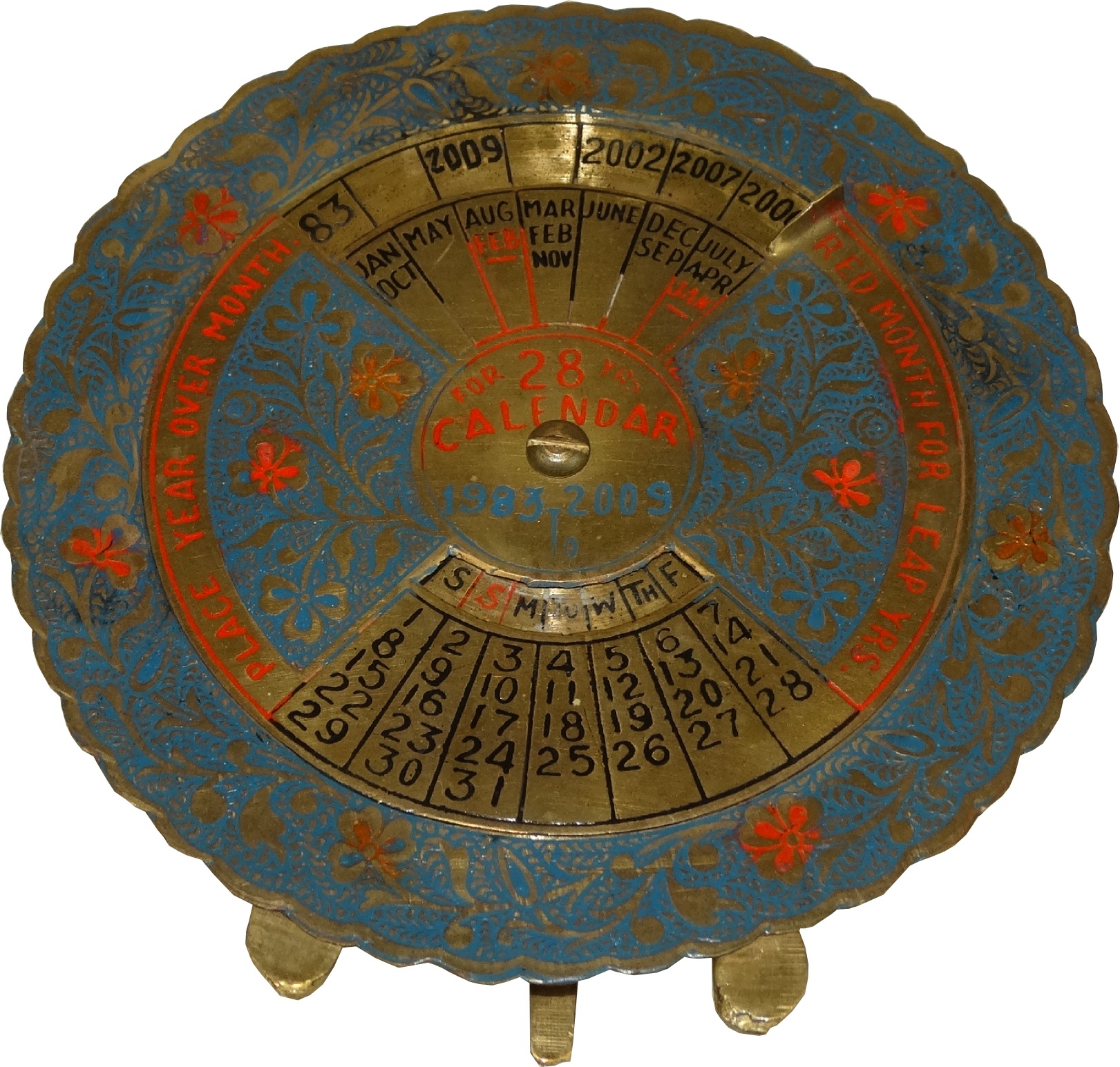The principle of the addition mechanism of the Schickard calculator can be found in one form or another in many pocket calculating machines. What is important, of course, is that the tens are carried automatically when the addition is made between a "9" and a "0" and so on. Using gears and a single tooth, this seems quite feasible. In practice, however, it must be avoided that the action of the single tooth causes only a partial transition of the higher digit. Turning it too far is also undesirable. In German these machines are called "Scheibenzählwerke", in English "dial adders". Some authors consider only calculating mechanisms as sophisticated as dial adders to be "machines". That an abacus is not a machine goes without saying, but neither can a slide adder be called a machine. The carries are operated directly by means of the stylus, and there is no automatic mechanism. It was not until the Addometer models that it became possible to make the transfer completely continuous and problem-free, both in addition and subtraction.
More information on the working principles of dial adders can be found here.
In the exhibition we have also included a number of simpler calculating aids, where rotating one disc (or 'mask') with respect to another gives a reading as a function of the setting chosen. Calculating discs with logarithmic scales also fit this description.
Brical, The British Calculators Ltd (London, UK), 1905-1915
The different discs are not placed side by side, but concentrically. There is also a decimal version and a British currency version.

Collection: E. Smet (item 362)
Optima, J. Ugrich (Berlin- Halensee, Germany), ca. 1910
To add, the central disc is turned clockwise with a stylus between the teeth. The rectangular result window shows the two rightmost numbers. A peg between 99 and 00, by means of a gear (not visible), carries to the hundreds (round window). Another gear and tooth (visible above the hundreds window) carry to the thousands. The arrows hide the hundreds and thousands windows for results less than 100 and 1000 respectively.

Collection: E. Smet (item 187)
Fraction of an Inch Adding Machine, K. Jaeger (USA), 1953 …1984
A very simple design where the front and rear discs are attached to each other and the grey disc in between can be rotated. The latter must be zeroed by placing the black mark next to the result window. Then, using a stylus, turn the disc by the desired fraction of an inch until it stops. Repeat for each fraction of an inch to be added. The final result will appear in the window.

Collection: E. Smet (item 194)
Weight calculator, M.H. Mear & Co. (Huddersfield, England), 1962
The weight of steel plates, cylinders, pipes, square and hexagonal profiles, ... can be determined in function of their dimensions.

Collection: E. Smet (item 202)
THE CALCULATOR, The Calculator Co. (Grand Rapids, Michigan, USA), 1907-1910
The American patent for this machine dates from 1907 and is in the name of Walter Richard Bonham (the inventor) and A.J. Schram (US845747, “Calculating-Machine”).

Collection: E. Smet (item 69)
Lightning, Lightning Adding Machine Sales Co. (Los Angeles, USA), 1948-1956
This post-war model is smoothly capable of both addition and subtraction. Zeroing is by means of a lever on the left. This is a very nice desktop model with a bakelite stand. The promotional leaflet describes this model as "as easy to use as dialing your telephone"!

Collection: E. Smet (item 62)
Addometer model B and C, RELIABLE TYPEWRITER & ADDING MACHINE CO. (Chicago, USA), 1928 - ca. 1950
There are six different versions of this dial adder. Model B is the metric version. Model C calculates in feet, inches and fractions of an inch. Carries are smooth in both addition and subtraction. The handle on the right can be used to reset all fields to 0.

Collection: E. Smet (item 6 and 34)
Dial-A-Matic, Sterling Plastics (New Jersey, USA), ca. 1958
This automatic adder is made entirely out of plastic.

Collection: E. Smet (item 138)
BIO-RITM, Ruh ve Madde (Istanbul, Turkije)
Calculate your bio-rhythm according to your physical, emotional and intellectual cycles (?).

Collection: E. Smet (item 202)
“For 28 yrs calendar”, ca. 1983

Collection: E. Smet (item 375)
“Für diese Besprechung …”, Siemens AG (Berlin, West-Germany), 1998
This calculating disc was placed in the meeting rooms at Siemens AG. The aim was to raise awareness of the fact that a meeting is ultimately paid for by the customer.

Collection: E. Smet (item 90)
MERKURIA 190, NORMA (Altusried, Germany), 1970-1993
This calculating disk corresponds to a 500mm slide rule.

Collection: E. Smet (item 284)
Computer (Italy)
The multiplication tables are discreetly hidden in this pen. You're not allowed to use it in primary school ...

Collection: E. Smet (item 58)
ROKA, (England ?), 1921
This is the German version of Darnley's Rotating Lightning Calculator Pencil Case, Ruler & Measure (GB167699 Patent 16/01/1920 by Darnley and Richards). This pencil case also contains the multiplication tables.

Collection: E. Smet (item 284)